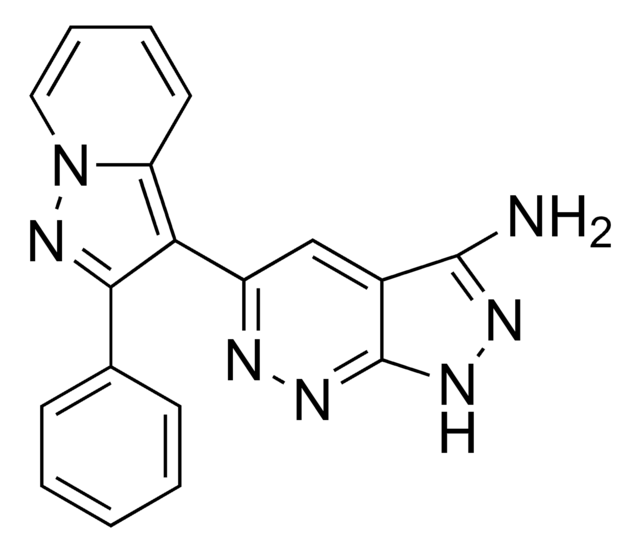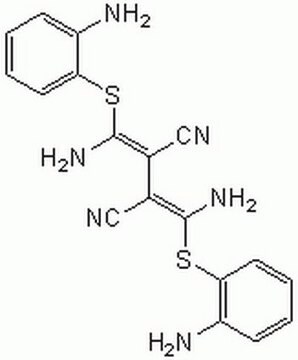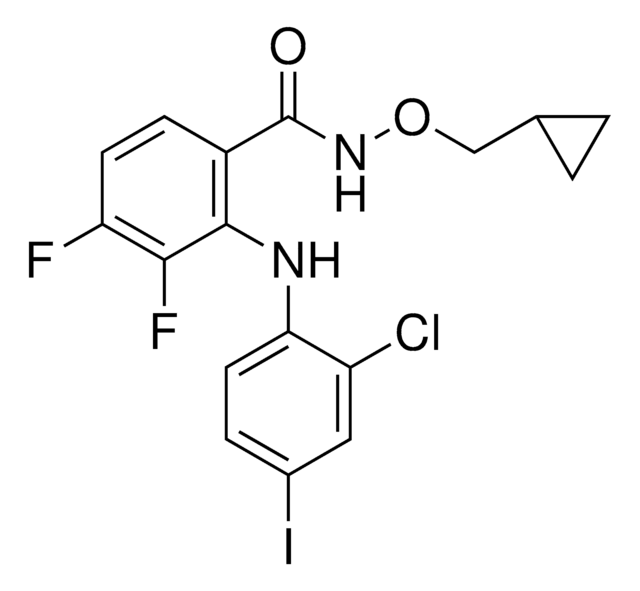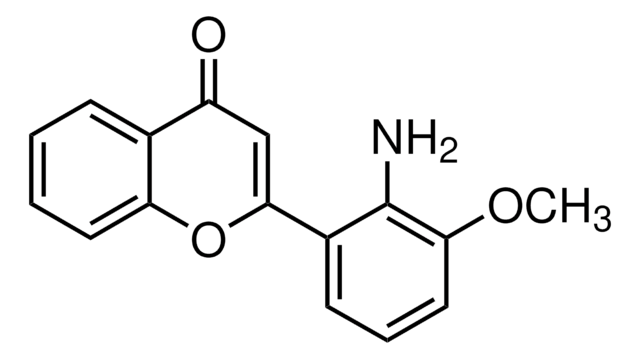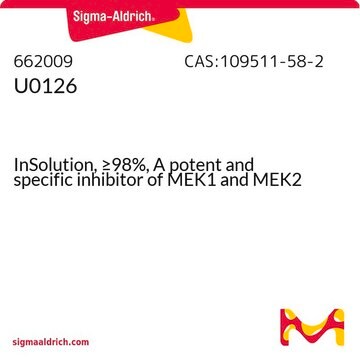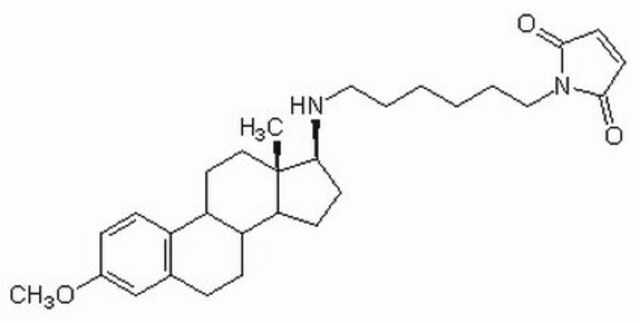Kluczowe dokumenty
A6355
3-(2-Aminoethyl)-5-((4-ethoxyphenyl)methylene)-2,4-thiazolidinedione hydrochloride
powder, ≥98% (HPLC)
Synonim(y):
Erk Inhibitor
About This Item
Polecane produkty
Poziom jakości
Próba
≥98% (HPLC)
Formularz
powder
warunki przechowywania
desiccated
under inert gas
kolor
off-white
rozpuszczalność
DMSO: ≥4 mg/mL
temp. przechowywania
2-8°C
ciąg SMILES
Cl[H].CCOc1ccc(cc1)C=C2SC(=O)N(CCN)C2=O
InChI
1S/C14H16N2O3S.ClH/c1-2-19-11-5-3-10(4-6-11)9-12-13(17)16(8-7-15)14(18)20-12;/h3-6,9H,2,7-8,15H2,1H3;1H/b12-9+;
Klucz InChI
PQVLWVGMXJPJLG-NBYYMMLRSA-N
Zastosowanie
Działania biochem./fizjol.
Cechy i korzyści
Kod klasy składowania
11 - Combustible Solids
Klasa zagrożenia wodnego (WGK)
WGK 3
Temperatura zapłonu (°F)
Not applicable
Temperatura zapłonu (°C)
Not applicable
Wybierz jedną z najnowszych wersji:
Masz już ten produkt?
Dokumenty związane z niedawno zakupionymi produktami zostały zamieszczone w Bibliotece dokumentów.
Produkty
The mitogen-activated protein kinase (MAPK) family consists of both stress activated (SAPK) and mitogen-activated (MAPK) protein kinases. They form a network of signal transduction cascades that mediate cellular responses to a diverse range of stimuli, including growth factors, chemical or osmotic stress, irradiation, bacterial infection and proinflammatory cytokines.
Nasz zespół naukowców ma doświadczenie we wszystkich obszarach badań, w tym w naukach przyrodniczych, materiałoznawstwie, syntezie chemicznej, chromatografii, analityce i wielu innych dziedzinach.
Skontaktuj się z zespołem ds. pomocy technicznej